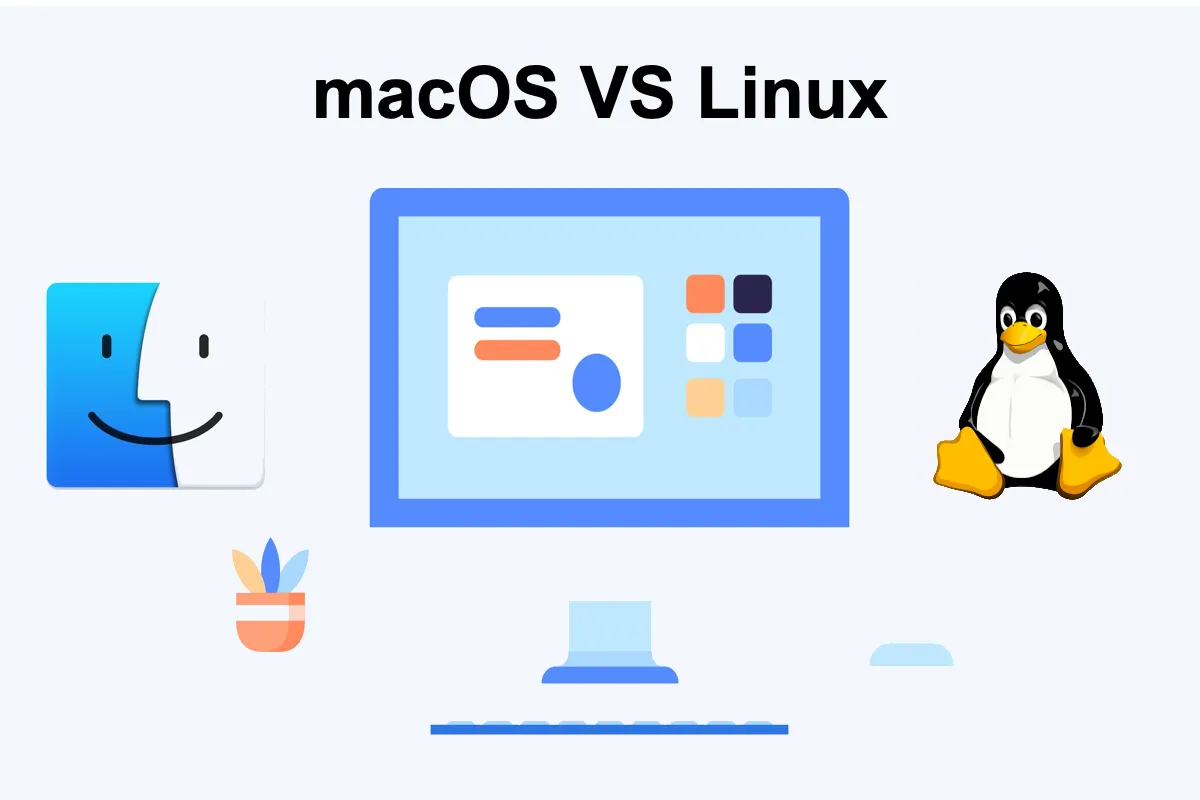
Linux vs macOS: Unveiling the Key Differences between Two Powerhouse Operating Systems
By Adedayo Ebenezer Oyetoke Published on: May 24th 2023 | 4 mins, 692 words Views: 709
In the world of operating systems, Linux and macOS stand as two formidable contenders. While Linux is renowned for its open-source nature and flexibility, macOS is celebrated for its sleek design and seamless integration with Apple hardware. In this comprehensive comparison, we delve into the intricacies of Linux and macOS, highlighting their strengths, weaknesses, and unique features. Whether you're a tech enthusiast, a developer, or a casual user, join us on this exploration as we uncover the similarities and differences between Linux and macOS.
1. History and Origins:
We embark on a journey through time, tracing the roots of Linux and macOS. Discover how Linus Torvalds laid the foundation for Linux and how Apple revolutionized the operating system landscape with macOS. Gain insight into their respective development philosophies and the communities that have evolved around them.
2. User Interface and Design:
Dive into the world of user experience as we compare the graphical interfaces of Linux and macOS. Explore the customizable nature of Linux desktop environments, such as GNOME and KDE, while appreciating the elegant simplicity and intuitiveness of macOS's graphical environment. Uncover the unique features and aesthetics that make each operating system stand out.
3. Software Ecosystems:
One of the key considerations when choosing an operating system is the availability and diversity of software. Delve into the rich and expansive software ecosystems of Linux and macOS. Explore the vast repository of open-source software in the Linux world, alongside the curated collection of applications available on macOS. Evaluate the compatibility, variety, and availability of software for your specific needs.
4. Performance and Stability:
Examine the performance and stability aspects of Linux and macOS. Understand how Linux's lightweight nature and modular design contribute to its efficiency and stability. Compare it with the optimized performance and stability offered by macOS, which is meticulously tailored to Apple's hardware ecosystem. Explore benchmarks, real-world usage scenarios, and user experiences to assess the performance of both operating systems.
5. Security and Privacy:
Security is a paramount concern in today's digital landscape. Uncover the security measures employed by Linux and macOS to protect user data and ensure system integrity. Explore Linux's robust permission model and the vast community-driven security audits it undergoes. Contrast it with the advanced security features integrated into macOS, including FileVault, Gatekeeper, and sandboxing. Gain insights into the privacy-centric features and practices of each system.
6. Developer Tools and Compatibility:
For developers, operating system compatibility and tools play a crucial role. Explore the development environments, programming languages, and tools available on Linux and macOS. Discover the vibrant development community surrounding Linux and its seamless integration with open-source technologies. Contrast it with the powerful Xcode suite and the ecosystem of developer tools tailored for macOS and iOS development.
7. Community and Support:
The strength of an operating system lies not only in its technical capabilities but also in its community and support. Discover the vibrant communities and extensive support networks that exist for both Linux and macOS. Explore online forums, documentation resources, and community-driven initiatives that foster collaboration and problem-solving.
8. Pricing and Accessibility:
An important aspect of any operating system is its cost and accessibility. Compare the pricing models and availability of Linux and macOS. Explore the open-source nature of Linux, which offers free distributions alongside enterprise options. Contrast it with the commercial pricing structure of macOS, which is tightly integrated with Apple's hardware offerings. Consider the affordability and accessibility factors based on your individual requirements.
Conclusion:
As we conclude this comprehensive comparison between Linux and macOS, it becomes evident that both operating systems offer distinct advantages and cater to diverse user needs. Whether you value the freedom and customization of Linux or the seamless integration and design elegance of macOS, your choice ultimately depends on your priorities and use case. By understanding the key differences between Linux and macOS, you can make an informed decision and embrace the operating system that best aligns with your preferences and requirements.
Embrace the power of choice as you embark on your journey into the world of operating systems. Whether you choose Linux or macOS, both offer a plethora of features and possibilities, empowering you to unleash your creativity and achieve your goals in the digital realm.